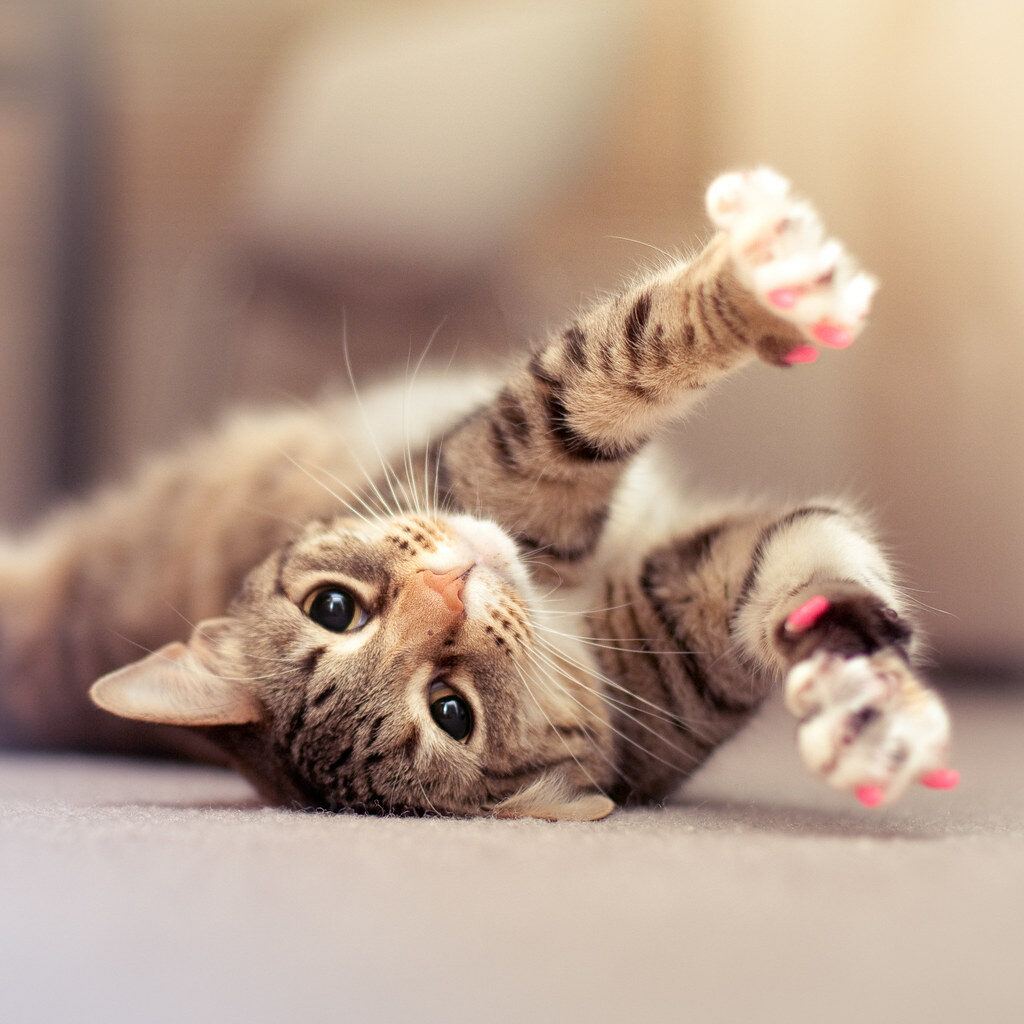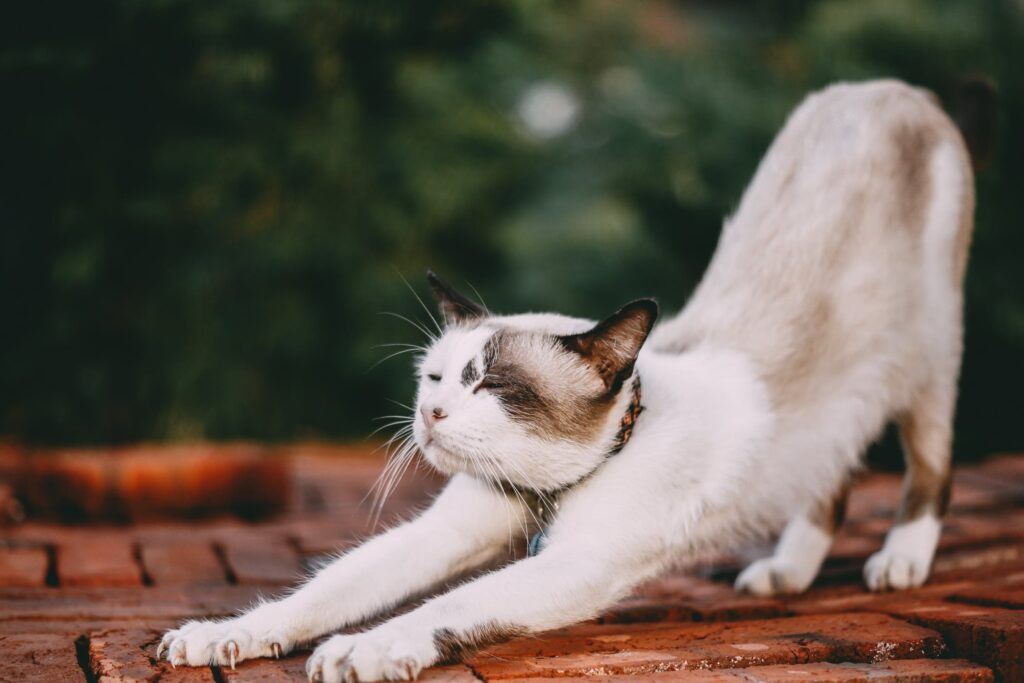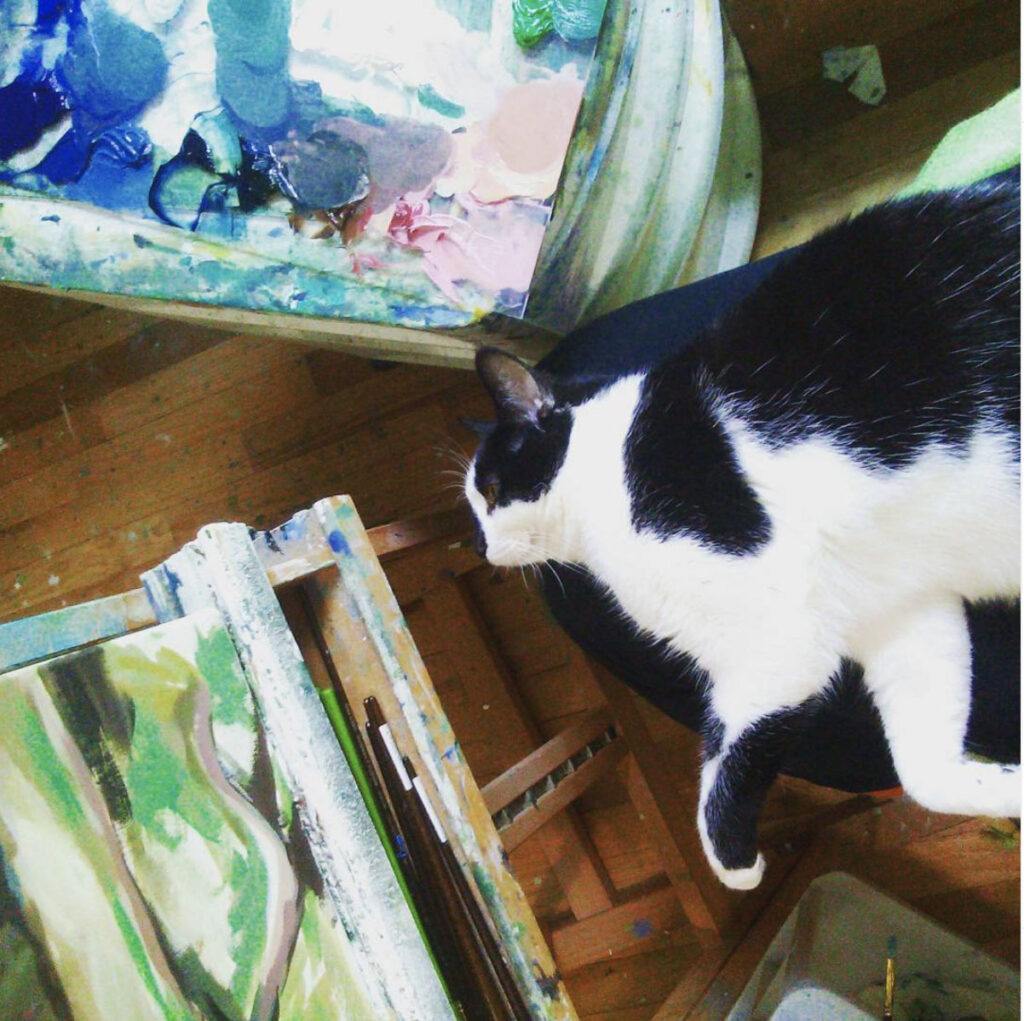This post may contain affiliate links. This means I may receive a small commission if products are purchased through them. All opinions are honest and remain my own.
If you’ve been thinking about having your cat declawed, I strongly urge you to reconsider. Many people don’t realize this, but the declawing procedure is both painful and traumatic for cats and can lead to serious health and behavioral problems down the line. There are plenty of humane alternatives to declawing a cat that are safe and effective, and ensure that you and your cat (and your furniture) can all happily coexist unharmed.

What is declawing?
Declawing is a surgical procedure that amputates the last bone of each of your cat’s toes. If performed on a human, it would be the same as cutting off each finger at the first knuckle. If that sounds bad, it’s because it is! Many countries have already banned declawing. The US Humane Society has condemned it except in rare cases when it may be medically necessary (such as the removal of cancerous nail bed tumors.)

A cat’s claw is unlike a human fingernail. The claw is actually part of the bone of each toe. In order to remove the claw, the entire last joint must be severed, including bone, ligaments, and tendons. Vets perform this amputation with either a scalpel, guillotine cutter, or laser.
The truth is that declawing is a painful procedure, with painful recovery time, followed by a long list of continuing painful side effects and complications. It is also entirely elective. So elect not to do it!
Why do cats need their claws?

1. Balance
Unlike humans, cats are digitigrade mammals, meaning they walk on their toes. A cat’s entire body – joints, muscles, nerves, etc – is specifically designed to distribute his weight evenly across his toes as he walks, runs, and jumps. Removing the end of each toe interferes with this natural balance, which can lead to severe back and shoulder pain. Cats literally have to relearn how to walk after being declawed.
2. Stretching and Exercise
Cats’ claws help them to stretch, which keeps their muscles toned. They do this by sinking their claws into a surface and pulling back. Without claws, cats are unable to exercise the muscles of their back and shoulders.
3. Protection
A cat’s claws are her first line of defence. A declawed cat may become aggressive and begin biting people as a means of self-protection because she feels so vulnerable.
4. Marking Territory
Making territory is a normal part of healthy cat behavior. All cats have scent glands in their paws, so scratching enables them to do this. (It also feels good for the cat.)
5. Playing and Climbing
The reason cats’ claws are curved is so they can climb up vertical surfaces, and also so that they can catch and hold onto prey. Even though indoor cats don’t need to hunt for food, they still need healthy playtime to fulfil their natural instincts. Claws help cats play with toys in their natural manner and allow them to climb up into their cat trees without falling.
What are the side effects of declawing?

There are a whole slew of negative side effects that should be seriously considered before deciding on such an extreme medical procedure. Some of the side effects may include:
- Paw pain – Cats will experience pain in their paws after a declawing surgery. Depending on how the surgery went, the pain could be temporary or end up hurting the cat for the rest of its life. If the veterinarian didn’t remove enough of the bone, the claws could attempt to grow back under the skin, resulting in a painful abscess.
- Nerve damage – If the veterinarian removes too much of the bone, and damages the digital paw pad next to the claw, scar tissue may form and cause severe pain.
- Infection – With any surgery comes the risk of infection. Feet are especially prone to infectious material getting inside the bandages.
- Litter Box Avoidance – It is common after being declawed for cats to avoid using their litter boxes. Because they are walking around on ten painful wounds, the litter might hurt their feet even more and. They might also want to avoid digging and/or getting litter inside the wounds. This will cause them to try to find someplace softer to relieve themselves.
- Aggressive Behavior/Biting – With the removal of a cat’s primary defensive tool, changes in behavior may occur. The cat may become more aggressive than she was prior to the surgery or she may start biting because she feels threatened or stressed.
- Abnormal gait – Amputating the ends of a cat’s toes will force her to walk differently. Since cats are naturally built to walk on their toes, this could wind up being very painful for the cat in the long run. Back pain and arthritis may occur. In fact, my dearly departed cat Bela (see her portrait above) suffered from arthritis towards the end of her life and now I wonder if it was because she had been declawed. (She came to us that way, I would NEVER declaw a cat.)
Alternatives to declawing
In my opinion, the worst part about declawing is that it is so unnecessary. In truth, it is very easy and manageable to minimize or eliminate problem clawing.
1. Redirect your cat’s scratching
Cats are going to scratch no matter what. It is part of their normal, healthy behavior. The trick is to get them to scratch where YOU want them to. In order to do this, you’ll need to provide the cat with places to scratch that are even better than your favorite upholstered chair or brand new rug. Invest in a good, sturdy cat tree with built-in scratching posts. Additionally, have at least a couple of other scratching posts and pads around the house so your cat has plenty of options for places that are OK to claw. You can’t expect your cat not to scratch up your furniture if you don’t provide him with any alternatives.
Some cats prefer to claw vertical surfaces, some prefer horizontal surfaces, and some seem to be OK with both. Pay attention to your cat’s scratching habits so you can select the best products and maximize your chances of success. If you see them scratching an unwanted surface, redirect them to one of the scratching posts. Eventually, they will develop a routine and (mostly) scratch in the appropriate places. Of course, nothing is 100% but this method has a high success rate and works great for my cats at home.
2. Trim your cat’s nails regularly
This is the second main element to minimizing claw damage in your household. One of the reasons cats scratch is to maintain their claws. Cats in the wild do this naturally by climbing trees and scratching against rough surfaces. This sheds the outer layers of dead nail hulls and maintains the length to keep them from becoming so long that they grow in on themselves. Indoor cats need a little more help with this. Helping them keep their nail length in check will go a long way towards ensuring appropriate scratching behavior.
In my experience, there are two kinds of cats. Those that HATE getting their nails trimmed more than anything else on earth, and those that are completely fine with it. I have one of each. To be fair, my more challenging cat, Chickadee, doesn’t necessarily hate her nails being trimmed, she just hates the process of being restrained in any way. I used to try to get the job done covertly while she slept, and that worked for a while, but she is on to me now. So now I wrap her in a blanket during nail trimming and make sure to give her plenty of praise and some treats afterwards. That way she knows that everything is OK and can get back to doing the really important stuff (like helping me paint.)

For more information on how to trim a cat’s nails, see my article here.
3. Cat nail caps
Admittedly, I have not tried these. Between the designated scratching areas around my house and the nail trimming, I have no use for them. But they are a product that exists and I’ve read quite a bit about them. They seem to work well for some cats, in situations where other methods of scratching control are not enough.
Cat nail caps are specially designed little plastic caps that you glue to the ends of your cat’s nails. You must trim the nails before putting them on. In 4-6 weeks when the cat’s nails have grown in, the caps will naturally fall off and need to be applied again. Some people and situations for whom these nail covers might be necessary include:
- Cats who have health or skin issues such as chronic itching
- Elderly people with delicate skin or people with bleeding issues
- Hairless cats
Soft Paws is the most well-known brand of cat nail caps. They come 40 to a pack in small, medium, or large (see their size chart to figure out what size you need for your cat.) They aren’t expensive, so if you think these could be a good solution for your kitty’s overzealous claws, they might be worth giving a try. You can find them on Amazon here.
*Note – I would NOT recommend these for cats that don’t like to be handled. Will probably only work for calm and docile cats.
4. Applying deterrents to furniture
Something else you could try is covering the problem areas of your furniture with materials that cats would find unpleasant to the touch. Things like aluminium foil, double-sided tape, or plastic furniture covers are examples of things that might do the trick. The idea is that eventually your cat will learn to scratch in the other areas that you have provided and you can then remove the deterrents.
Citrus spray is another type of cat deterrent. Cats have a natural aversion to citrus scent so the idea is to spray onto the area you DON’T want them to scratch to keep them away. You can find a selection of cat deterrent sprays here.
I would also recommend sprinkling catnip on their scratching posts and other areas that you DO want them to scratch. Cats understand scent better than anything else. Good scent YES, bad scent NO.
5. Pheromone diffusers
Some cats may scratch too much because they are stressed or anxious. While it might be challenging for the average person to get to the root of kitty psychology, these devices were designed to make it a little easier. Diffusers emit a synthetic pheromone spray that is supposed to help cats feel safe and calm. This, in conjunction with the above methods, may help your kitty establish a healthier scratching routine. If you’re interested in trying out a pheromone diffuser, this Feliway one was recommended by my vet.
Pheromone diffusers most likely aren’t going to be a solution to inappropriate cat scratching all by themselves, but they could be a useful piece of the puzzle when it comes to figuring out the situation as a whole.

Leave a Reply